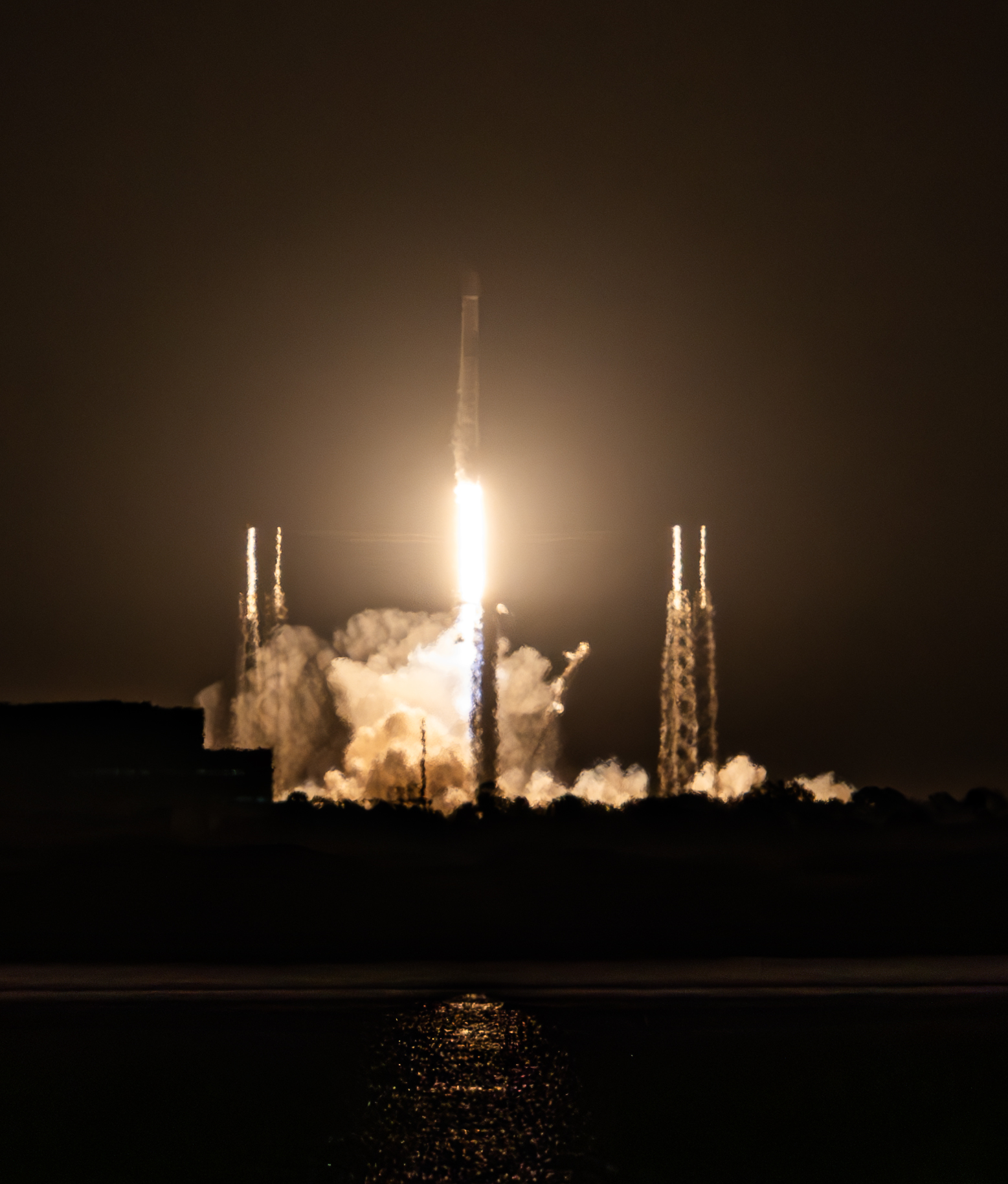
SpaceX has wrapped up its 300th successful Falcon mission, following Sunday evening’s launch of the veteran B1073 from storied Space Launch Complex (SLC)-40 at Cape Canaveral Space Force Station, Fla. Liftoff of the 12-times-used booster occurred at 8:52 p.m. EST and delivered 23 Starlink low-orbiting internet communications satellites uphill in the fifth Falcon 9 flight inside January’s opening half.
Last night’s launch continues an impressive 2024 cadence for the Hawthorne, Calif.-headquartered organization, following on the heels of three prior Starlink flights—two from Vandenberg Space Force Base, Calif., and one from the Space Coast, including the first six “Direct-to-Cell” satellites—as well as a commercial mission on behalf of Sweden to deploy the Ovzon-3 broadband communications satellite on the initial leg of its trek to Geostationary Transfer Orbit (GTO). Aboard B1073, the 23-strong Starlink stack tipped the scales at just over 40,600 pounds (18,400 kilograms) and brought the total number of these flat-packed satellites launched since May 2019 to well north of 5,700.
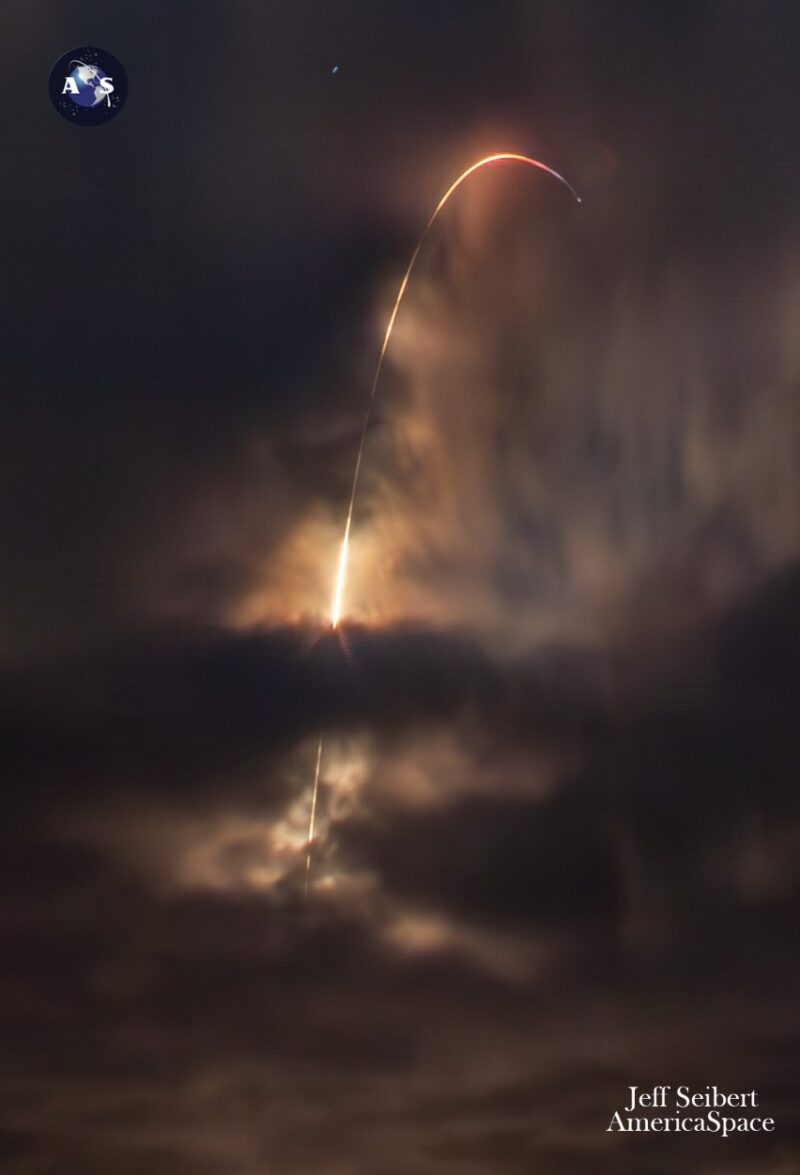
B1073 was initially scheduled to fly on Saturday evening, but was called off and reset instead for Sunday and an expansive “window” with a suite of T-0 points extending from 7:27 p.m. EST through 11:25 p.m. EST. In readiness for launch, the Autonomous Spaceport Drone Ship (ASDS), “A Shortfall of Gravitas”, departed Port Canaveral on 11 January, having earlier returned with the B1067 booster after her 7 January mission.
Weather conditions for a launch on Sunday, and a backup attempt on Monday evening, could not have been more opposite: with an 85-percent likelihood of acceptable conditions for the first opportunity, before deteriorating markedly to only 20-percent-favorable for the second. “Late Sunday, a warm front to our south begins to meander north, bringing with it a thick layer of low clouds with embedded showers,” noted the 45th Weather Squadron at Patrick Space Force Base in its L-1 briefing.

“For the primary launch window, weather looks mostly favorable, with the primary concern being the Thick Cloud Layers Rule,” it added. “Probability of violation remains low due to the low-altitude tops of the thick cloud layer and expected positioning just to the south of the Spaceport.”
But with numerous showers and a few strong storms expected from Monday afternoon into Tuesday, a starker weather picture was on the cards, causing what the 45th described as “concern for multiple launch weather constraint violations”. This includes potential violation of the Thick Cloud Layers Rule, the Surface Electric Field Mill Rule and the Disturbed Weather Rule.
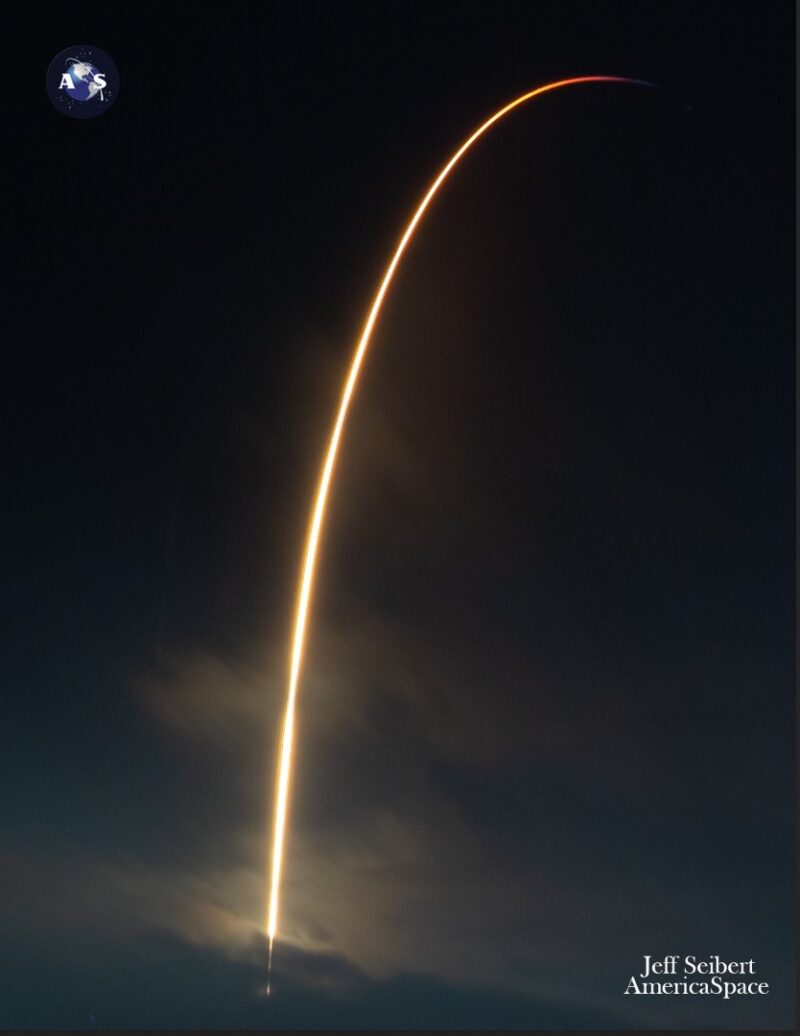
Heading into Sunday’s opening attempt, fueling of the Falcon 9 with liquid oxygen and a highly refined form of rocket-grad kerosene (known as “RP-1”) got underway shortly after 8 p.m. EST, as SpaceX aimed for a T-0 around 90 minutes into last night’s window. Without further ado, B1073 sprang into the darkness at 8:52 p.m. EST, the brilliant exhaust of her nine Merlin 1D+ engines pushing the vehicle uphill under a combined thrust of 1.5 million pounds (680,000 kilograms).
It was the 12th outing of this particular Falcon 9 core, which entered service back in May 2022 and has now emplaced 297 Starlinks into orbit on eight discrete missions. The veteran booster also lifted the SES-22 and Amazonas Nexus geostationary communications satellites to GTO in June 2022 and February of last year, respectively, and launched a lunar-bound mission in December 2022 with Japan’s Hakuto-R Moon lander, the United Arab Emirates (UAE) Rashid rover and NASA’s water-ice-seeking Lunar Flashlight.
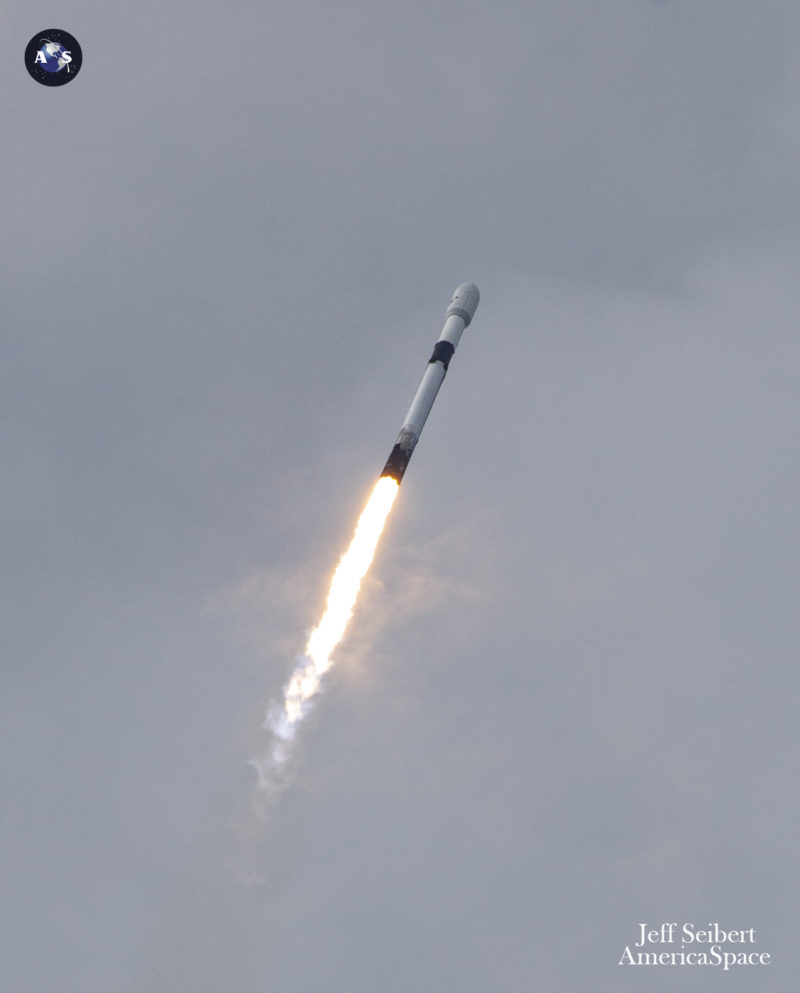
And just last March, on her seventh mission, she became the most flight-seasoned Falcon 9 ever to lift a payload—whether human or cargo—to the International Space Station (ISS) with the CRS-27 Cargo Dragon. With last night’s flight, she becomes the tenth booster since March 2022 to reach a 12th launch.
B1073 separated from the stack at 2.5 minutes into ascent and completed a picture-perfect return homeward, guided by Entry and Landing “burns” and her suite of hypersonic grid-fins to alight smoothly on ASOG’s deck about eight minutes after liftoff. The single Merlin 1D+ Vacuum engine of the Falcon 9’s second stage then ignited for a customary six-minute firing to deliver the 23 Starlinks safely into orbit.
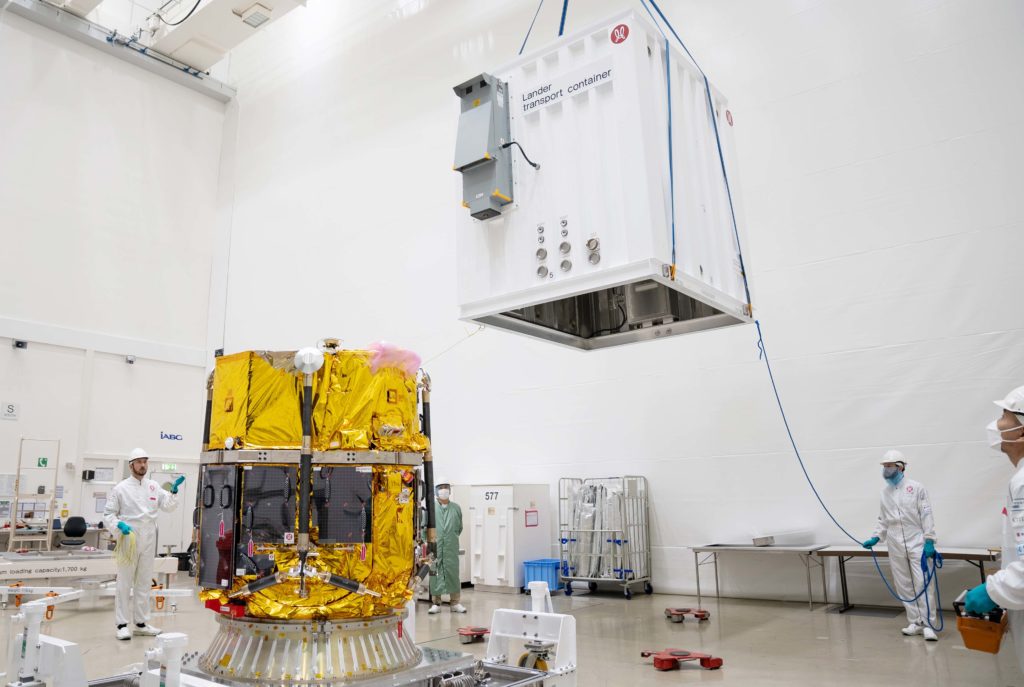
Deployment occurred a little shy of 65 minutes into the mission, bringing to 89 the total number of these small satellites emplaced into space so far in 2024. As a network, Starlink enables high-speed and low-latency internet provision to 70 sovereign nations and international markets in North and South America, Europe, Asia, Oceania and Africa. Landlocked Eswatini—formerly Swaziland—in southern Africa, together with Honduras and Paraguay joined Starlink last month.
The downsized Starlink “V2 Mini” satellites, first flown last February, boast three to four times greater “usable” bandwidth than earlier Starlink iterations. “V2 Minis include key technologies—such as more powerful phased-array antennas and the use of E-Band for backhaul—which will allow Starlink to provide 4x more capacity per satellite than earlier iterations,” SpaceX explained. “Among other enhancements, V2 Minis are equipped with new argon Hall thrusters for on-orbit maneuvering.”
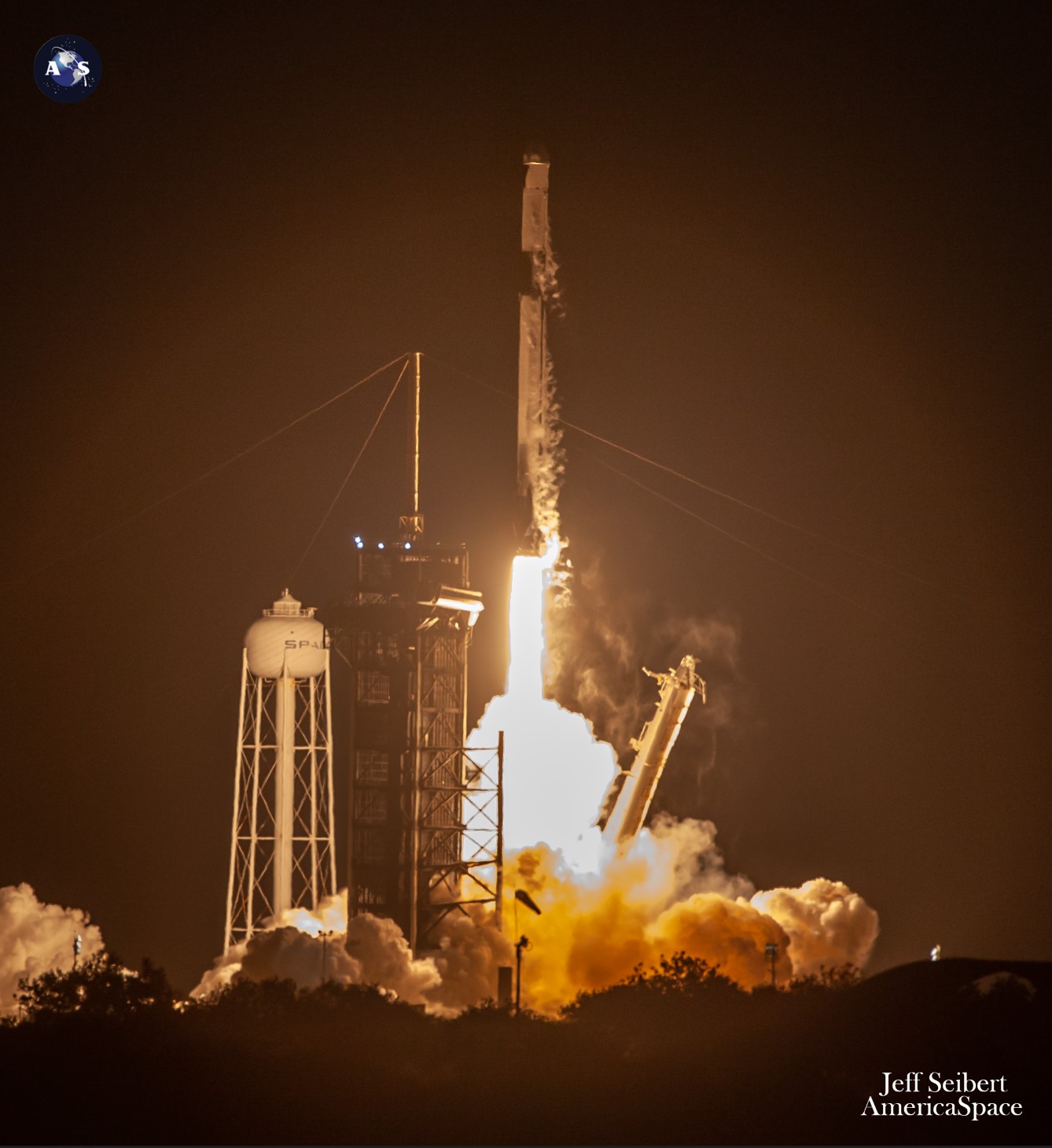
Florida-based intercity operator Brightline adopted Starlink on its trains earlier in 2023, the first passenger rail service in the world to do so. Additionally, El Salvador’s Ministry of Education has begun integrating Starlink capability into its schools to help close the digital divide between urban and remote rural communities and 50 Rwandan schools are now connected via Starlink’s high-speed internet service.
Earlier this month, SpaceX also launched the first six of its “Direct-to-Cell” Starlinks, which permit mobile network providers to offer “seamless global access to texting, calling and browsing” whether “on land, lakes or coastal waters”, without changing hardware or firmware. Last week, the organization confirmed its team had sent and received their first text messages via Direct-to-Cell only six days after launch.
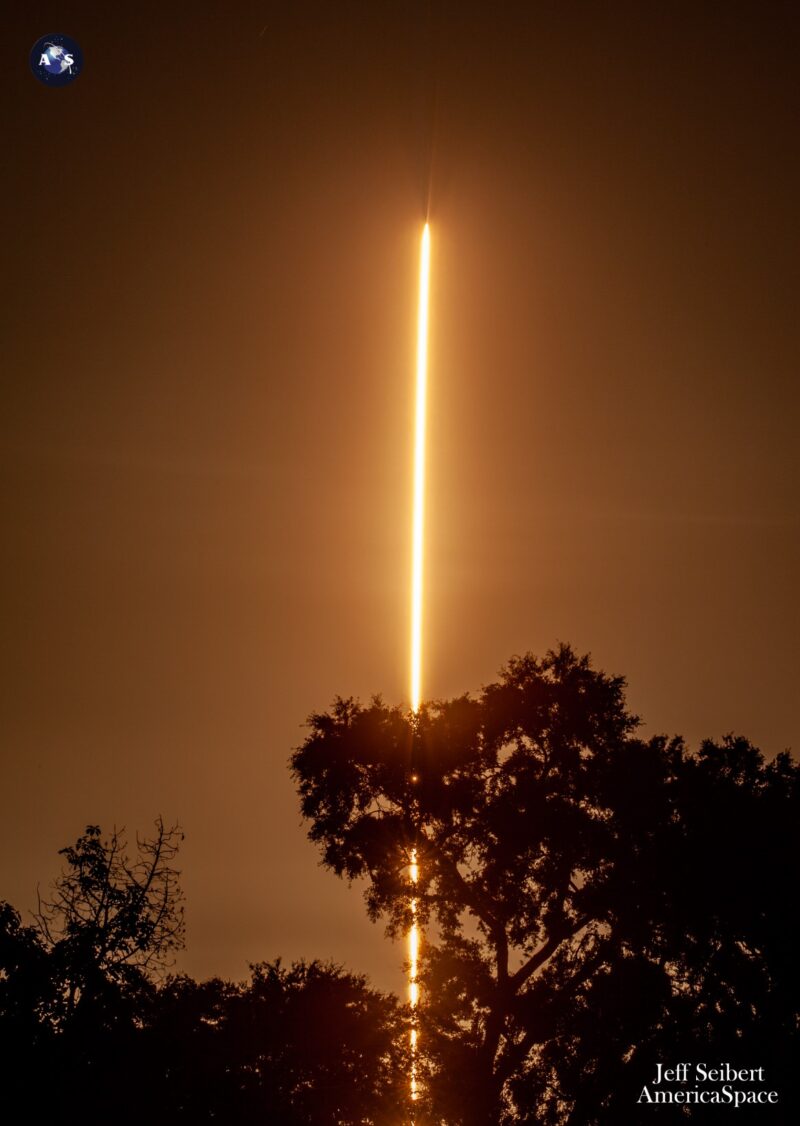
Last night’s launch also marked the 300th successful flight of a Falcon-class booster, counting a pair of Falcon 1 missions in September 2008 and July 2009, together with 289 Falcon 9 missions since June 2010—not counting the in-flight loss of the CRS-7 Cargo Dragon in June 2015—and nine missions by the triple-barreled Falcon Heavy between February 2018 and last month. Those 300 launches have resulted in the successful landing of no less than 264 boosters (both single-stick Falcon 9s and Falcon Heavy center cores or side-boosters) either on solid ground or atop oceangoing drone ships.
Looking ahead, Dragon Freedom is set to rise atop the B1080 booster from historic Pad 39A at Florida’s Kennedy Space Center (KSC) at 5:11 p.m. EST Wednesday, carrying a crew of four on AxiomSpace, Inc.’s all-private Ax-3 mission to the ISS. On Friday, SpaceX noted that the Ax-3 crew’s Dragon Freedom spacecraft had arrived at the 39A hangar ahead of integration atop the booster.
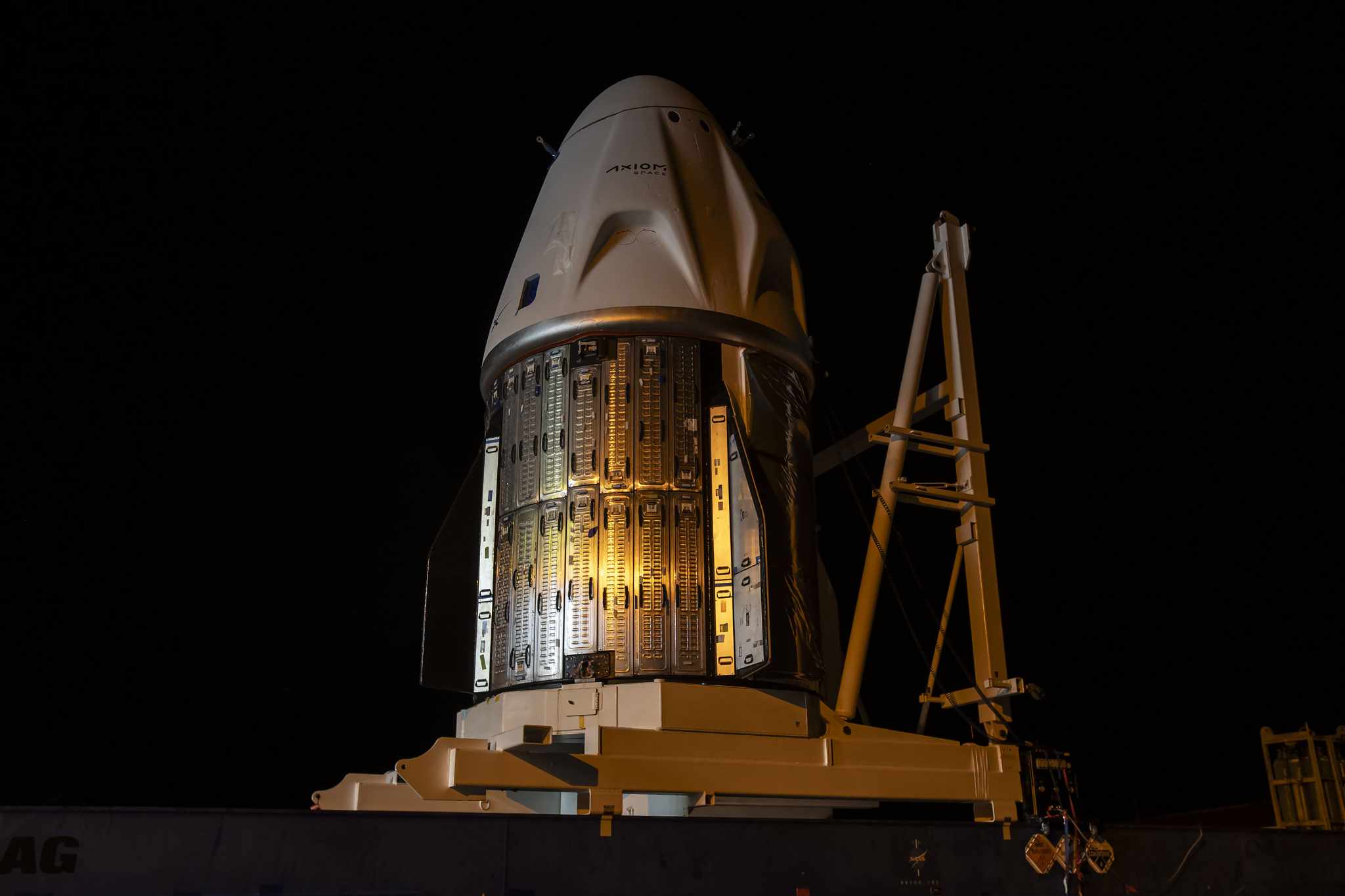
Led by former ISS commander, America’s most experienced spacewalker and AxiomSpace Chief Astronaut Mike Lopez-Alegria, the Ax-3 crew includes flyers from Italy (Pilot Walter Villadei), Sweden (Mission Specialist Marcus Wandt) and the first national space traveler of Türkiye (Alper Gezeravcı). They are targeting docking at the ISS at 5:15 p.m. EST Friday and will spend about two weeks performing a wide range of scientific research, technology demonstrations and educational outreach alongside the station’s incumbent Expedition 70 crew.
They will fly Dragon Freedom, which is embarking on her third trip to space, having previously supported the six-month stay of Crew-4 Commander Kjell Lindgren, Bob “Farmer” Hines and Mission Specialists Jessica Watkins and Italy’s Samantha Cristoforetti between April and October of 2022 and more recently AxiomSpace’s Ax-2 commercial mission last May, crewed by former NASA astronaut Peggy Whitson, airshow pilot John Shoffner and Ali Al-Qarni and Rayyanah Barnawi of Saudi Arabia, the latter of whom became the first Arab woman to voyage into space.
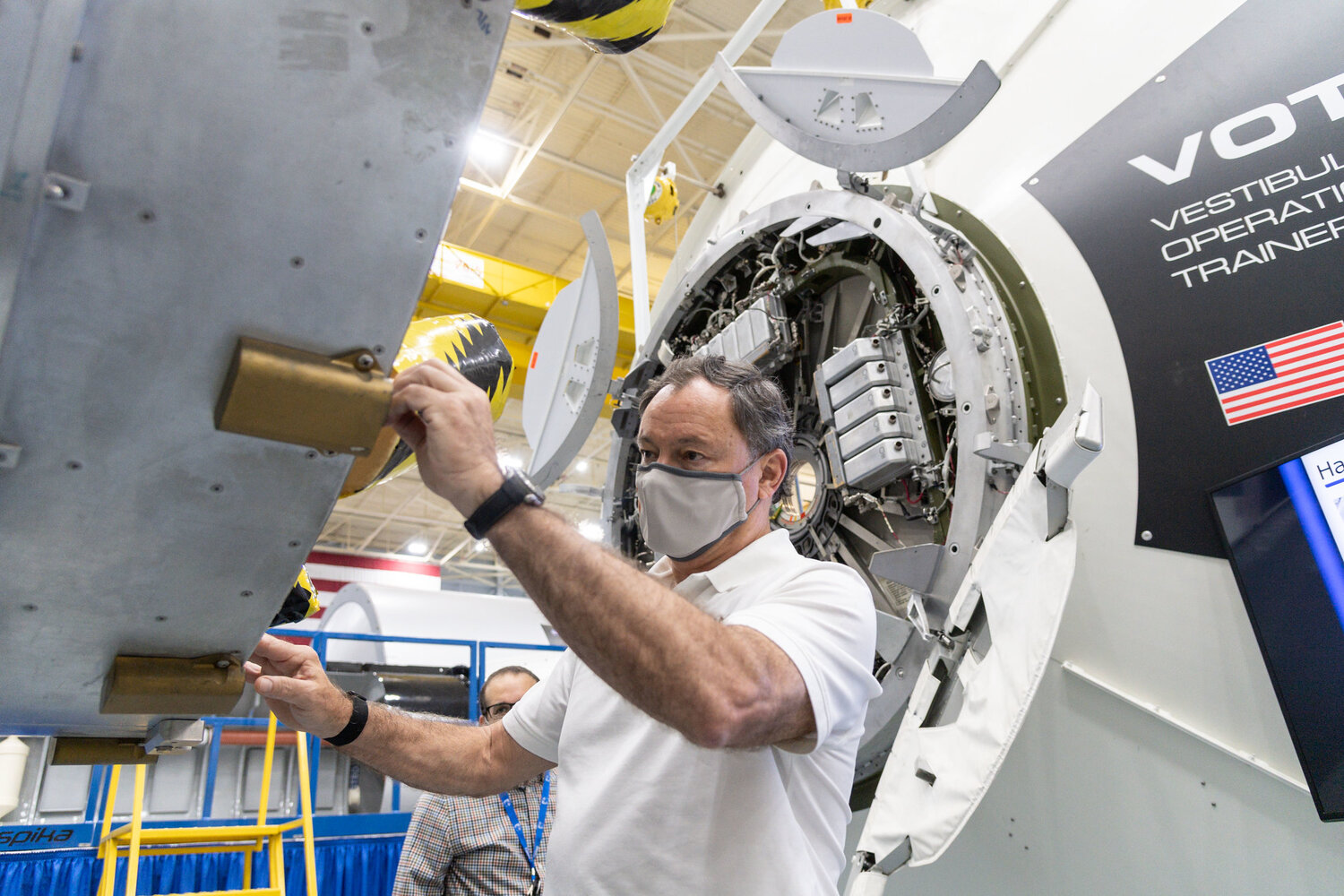
Of note, Lopez-Alegria becomes only the tenth human (and the eighth American) to reach a sixth personal spaceflight. Selected into NASA’s Astronaut Corps in March 1992, he flew three Space Shuttle missions between October 1995 and December 2002, before commanding Expedition 14 from September 2006 through April 2007, the longest ISS increment—more than seven months—at that time.
As AxiomSpace’s Chief Astronaut, Lopez-Alegria went on to command the historic Ax-1 mission in April 2022 and backed up Whitson on last year’s Ax-2. Currently, only two other humans—retired shuttle astronauts Jerry Ross and Franklin Chang-Diaz—have logged more than six spaceflights, both having flown a seventh time in April and June 2002.




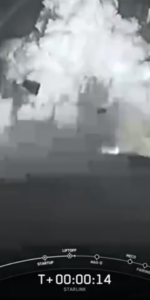
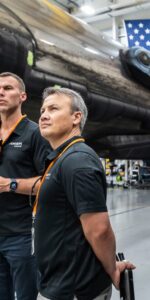
9 Comments
Leave a Reply9 Pings & Trackbacks
Pingback:SpaceX Targets Tonight for Long-Delayed Vandenberg Mission, NG-20 Cygnus Launch Up Next Week - AmericaSpace
Pingback:SpaceX Launches Transporter-10, Aims for Next Launch Under Two Hours Later - AmericaSpace
Pingback:SpaceX Launches Record-Setting Falcon Missions, Under Two Hours Apart - AmericaSpace
Pingback:SpaceX Launches Record-Setting Falcon Missions, Under Two Hours Apart - SPACERFIT
Pingback:SpaceX Launches Transporter-10, Aims for Next Launch Under Two Hours Later - SPACERFIT
Pingback:SpaceX Aims to Complete Weekend Triple-Header With Tonight’s Bandwagon-1 Launch - AmericaSpace
Pingback:SpaceX Aims to Complete Weekend Triple-Header With Tonight’s Bandwagon-1 Launch - SPACERFIT
Pingback:SpaceX Completes Weekend Triple-Header, Launches 11-Payload Bandwagon-1 Stack - AmericaSpace
Pingback:SpaceX Completes Weekend Triple-Header, Launches 11-Payload Bandwagon-1 Stack - SPACERFIT